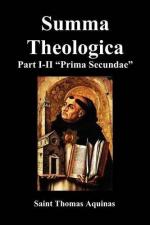Reply Obj. 3: Even in those precepts which direct us to God, some are moral precepts, which the reason itself dictates when it is quickened by faith; such as that God is to be loved and worshipped. There are also ceremonial precepts, which have no binding force except in virtue of their Divine institution. Now God is concerned not only with the sacrifices that are offered to Him, but also with whatever relates to the fitness of those who offer sacrifices to Him and worship Him. Because men are ordained to God as to their end; wherefore it concerns God and, consequently, is a matter of ceremonial precept, that man should show some fitness for the divine worship. On the other hand, man is not ordained to his neighbor as to his end, so as to need to be disposed in himself with regard to his neighbor, for such is the relationship of a slave to his master, since a slave “is his master’s in all that he is,” as the Philosopher says (Polit. i, 2). Hence there are no judicial precepts ordaining man in himself; all such precepts are moral: because the reason, which is the princip[le] in moral matters, holds the same position, in man, with regard to things that concern him, as a prince or judge holds in the state. Nevertheless we must take note that, since the relations of man to his neighbor are more subject to reason than the relations of man to God, there are more precepts whereby man is directed in his relations to his neighbor, than whereby he is directed to God. For the same reason there had to be more ceremonial than judicial precepts in the Law. ________________________
SECOND ARTICLE [I-II, Q. 104, Art. 2]
Whether the Judicial Precepts Were Figurative?
Objection 1: It would seem that the judicial precepts were not figurative. Because it seems proper to the ceremonial precepts to be instituted as figures of something else. Therefore, if the judicial precepts are figurative, there will be no difference between the judicial and ceremonial precepts.
Obj. 2: Further, just as certain judicial precepts were given to the Jewish people, so also were some given to other heathen peoples. But the judicial precepts given to other peoples were not figurative, but stated what had to be done. Therefore it seems that neither were the judicial precepts of the Old Law figures of anything.
Obj. 3: Further, those things which relate to the divine worship had to be taught under certain figures, because the things of God are above our reason, as stated above (Q. 101, A. 2, ad 2). But things concerning our neighbor are not above our reason. Therefore the judicial precepts which direct us in relation to our neighbor should not have been figurative.
On the contrary, The judicial precepts are expounded both in the allegorical and in the moral sense (Ex. 21).




